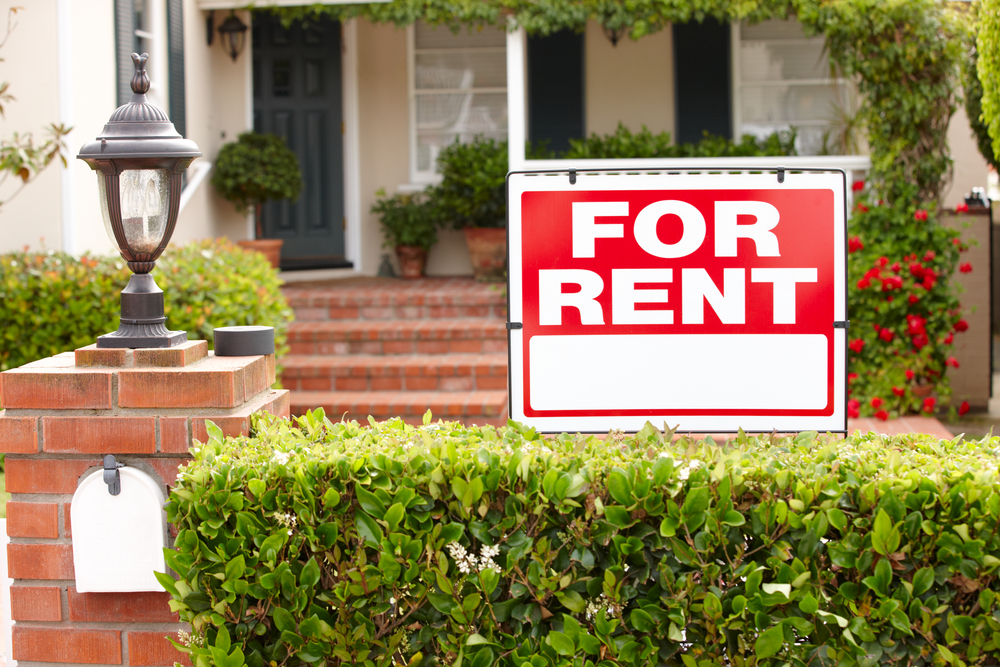Rental stability is the measure of how likely it is that current tenants will be able to continue to afford rent. Depending on the rental property, rental stability could be enforced by regulation or left to market forces. Each approach has its pros and cons.
When rental stability is enforced by regulation, it is typically done in one of two ways: 1) through rent control, where prices are fixed and tenants do not need a lease, or 2) through rental stabilization, where prices can increase by amounts set by local authorities and tenants require a lease.
In terms of renting, the pros of such measures are primarily for the tenants: Tenants can be reasonably confident that they will be able to afford their rent and that they won’t get asked to leave. There is also some measure of community-building that occurs with rental stabilization as long-term tenants tend to be more attached to where they live than short-term ones.
The cons of such regulations spread themselves between landlords and renters: For the landlord, it becomes harder to make a profit and to evict problem tenants from properties with rent control or rent stabilization; and for renters, the lack of turnover makes it difficult for new renters to secure a lease in rent-stabilized areas, and even for the current tenants, the properties involved are often neglected as landlords have little to no incentive to maintain them.
Given the possibility of dispute between tenant and landlord, rental stability has become something of a political issue. Apart from a few federal laws prohibiting landlords from raising rent due to discrimination or retaliation against a tenant, the laws concerning rental stability depend on your state, and sometimes your city. In many states, rent control is illegal and cities are banned from creating rent control measures. In other states, rent control is left up to the cities. In California and Oregon, rent control is written into state law.
That isn’t to say that the federal government has only passed laws to try to help renters: It has also spent money on attempts to help renters, such as with the American Rescue Plan. So what is the American Rescue Plan, and how does it affect rental stability and housing assistance?
What is the American Rescue Plan?
The American Rescue Plan is an economic stimulus package signed into law by US President Joe Biden in 2021. Touted as a means to assist with the economic recovery in the wake of the COVID-19 pandemic, it offers, among other things, assistance for many renters who struggled to pay for rent and utilities.
Did the American Rescue Plan itself redefine rental stability? Not directly. However, it showed how efficient it would be if other forms of assistance, such as helping with payments, were implemented instead of stabilizing prices for renters.
The Impact of the American Rescue Plan
Even as soon as a year after implementation, CBS News reported that Americans had mixed feelings about the program. Certainly, the program did provide short-term relief to many Americans who would otherwise have been worse off, but both Republicans and Democrats criticized the program for 1) failure to use existing COVID-19 relief resources before seeking more, 2) failure to deal fairly with the states, meaning that the helpfulness of the act to struggling individuals, including renters, varies dramatically based on where you live. Some also criticized the act in general as treating the situation in a way that they felt would be more appropriate for an eternity of emergency shut-downs rather than for the start of a recovery, though others praised the program for lifting children out of poverty.
Overall, the country was having a difficult time economically one year later, with such difficulties as record high prices for basics like gas and eggs, but how was rent affected? How is it still being affected today?
Although it is a difficult task to sort out what impact the American Rescue Plan had on the economy when there are so many other forces that can affect it, PolitiFact reported that economists estimate that the American Rescue Plan was responsible for one-quarter to one-half of the inflation faced in the years following its passage. This came in response to a Republican in Ohio claiming that Joe Biden was responsible for the skyrocketing prices that made it tougher for Americans to pay for both rent and other necessities. After all, if you are in a position where you have to choose between paying rent and buying food, how stable is your rental status anyway?
Its Long-Term Effects
The short-term effects of the American Rescue Plan have stopped, so it is appropriate to consider primarily the long-term effects at this point. Like the overall effects on the economy, the long-term effects imposed by the American Rescue Plan on rental stability going forward are similarly difficult to predict. We know that it has had an overall effect on inflation, which makes rent and everything else more expensive for those living in the US.
However, the economy in general is a complicated subject, and even the subtopics of rent prices and rental stability have multiple factors influencing them. In addition to the effects of inflation, rental prices are determined in part by where the rental property is situated. High-demand areas like coastal property in Florida and California, for instance, typically mean higher prices than more rural areas of the country. The overall availability of rental properties in comparison to the demand is a major factor in prices, as anyone could tell you after passing Econ 101. In recent years, there is also the more frequent matter of investors buying out homes that people would have normally been owned by their residents and then charging rent, effectively pursuing a passive income at the expense of other Americans’ opportunities.
Because we do know that the American Rescue Plan contributed to at least one factor involved in rental prices and stability in the long term, we can say that its long-term effects exist. For as long as the inflation caused by the stimulus package remains an issue, it is contributing to higher rents and costs of living for the very same renters it helped in the short term.
Keeping in mind that there was more to the American Rescue Plan than just the housing assistance, the observed effects on rental stability and the economy as a whole serve better as a starter study than a true litmus test for rental assistance approaches that offer an alternative to rent control. Yet, there are lessons to be learned as we seek to overcome the housing problems we face in this country.
Rental stability is the measure of how likely it is that current tenants will be able to continue to afford rent. Depending on the rental property, rental stability could be enforced by regulation or left to market forces. Each approach has its pros and cons.
When rental stability is enforced by regulation, it is typically done in one of two ways: 1) through rent control, where prices are fixed and tenants do not need a lease, or 2) through rental stabilization, where prices can increase by amounts set by local authorities and tenants require a lease.
In terms of renting, the pros of such measures are primarily for the tenants: Tenants can be reasonably confident that they will be able to afford their rent and that they won’t get asked to leave. There is also some measure of community-building that occurs with rental stabilization as long-term tenants tend to be more attached to where they live than short-term ones.
The cons of such regulations spread themselves between landlords and renters: For the landlord, it becomes harder to make a profit and to evict problem tenants from properties with rent control or rent stabilization; and for renters, the lack of turnover makes it difficult for new renters to secure a lease in rent-stabilized areas, and even for the current tenants, the properties involved are often neglected as landlords have little to no incentive to maintain them.
Given the possibility of dispute between tenant and landlord, rental stability has become something of a political issue. Apart from a few federal laws prohibiting landlords from raising rent due to discrimination or retaliation against a tenant, the laws concerning rental stability depend on your state, and sometimes your city. In many states, rent control is illegal and cities are banned from creating rent control measures. In other states, rent control is left up to the cities. In California and Oregon, rent control is written into state law.
That isn’t to say that the federal government has only passed laws to try to help renters: It has also spent money on attempts to help renters, such as with the American Rescue Plan. So what is the American Rescue Plan, and how does it affect rental stability and housing assistance?
What is the American Rescue Plan?
The American Rescue Plan is an economic stimulus package signed into law by US President Joe Biden in 2021. Touted as a means to assist with the economic recovery in the wake of the COVID-19 pandemic, it offers, among other things, assistance for many renters who struggled to pay for rent and utilities.
Did the American Rescue Plan itself redefine rental stability? Not directly. However, it showed how efficient it would be if other forms of assistance, such as helping with payments, were implemented instead of stabilizing prices for renters.
The Impact of the American Rescue Plan
Even as soon as a year after implementation, CBS News reported that Americans had mixed feelings about the program. Certainly, the program did provide short-term relief to many Americans who would otherwise have been worse off, but both Republicans and Democrats criticized the program for 1) failure to use existing COVID-19 relief resources before seeking more, 2) failure to deal fairly with the states, meaning that the helpfulness of the act to struggling individuals, including renters, varies dramatically based on where you live. Some also criticized the act in general as treating the situation in a way that they felt would be more appropriate for an eternity of emergency shut-downs rather than for the start of a recovery, though others praised the program for lifting children out of poverty.
Overall, the country was having a difficult time economically one year later, with such difficulties as record high prices for basics like gas and eggs, but how was rent affected? How is it still being affected today?
Although it is a difficult task to sort out what impact the American Rescue Plan had on the economy when there are so many other forces that can affect it, PolitiFact reported that economists estimate that the American Rescue Plan was responsible for one-quarter to one-half of the inflation faced in the years following its passage. This came in response to a Republican in Ohio claiming that Joe Biden was responsible for the skyrocketing prices that made it tougher for Americans to pay for both rent and other necessities. After all, if you are in a position where you have to choose between paying rent and buying food, how stable is your rental status anyway?
Its Long-Term Effects
The short-term effects of the American Rescue Plan have stopped, so it is appropriate to consider primarily the long-term effects at this point. Like the overall effects on the economy, the long-term effects imposed by the American Rescue Plan on rental stability going forward are similarly difficult to predict. We know that it has had an overall effect on inflation, which makes rent and everything else more expensive for those living in the US.
However, the economy in general is a complicated subject, and even the subtopics of rent prices and rental stability have multiple factors influencing them. In addition to the effects of inflation, rental prices are determined in part by where the rental property is situated. High-demand areas like coastal property in Florida and California, for instance, typically mean higher prices than more rural areas of the country. The overall availability of rental properties in comparison to the demand is a major factor in prices, as anyone could tell you after passing Econ 101. In recent years, there is also the more frequent matter of investors buying out homes that people would have normally been owned by their residents and then charging rent, effectively pursuing a passive income at the expense of other Americans’ opportunities.
Because we do know that the American Rescue Plan contributed to at least one factor involved in rental prices and stability in the long term, we can say that its long-term effects exist. For as long as the inflation caused by the stimulus package remains an issue, it is contributing to higher rents and costs of living for the very same renters it helped in the short term.
Keeping in mind that there was more to the American Rescue Plan than just the housing assistance, the observed effects on rental stability and the economy as a whole serve better as a starter study than a true litmus test for rental assistance approaches that offer an alternative to rent control. Yet, there are lessons to be learned as we seek to overcome the housing problems we face in this country.




